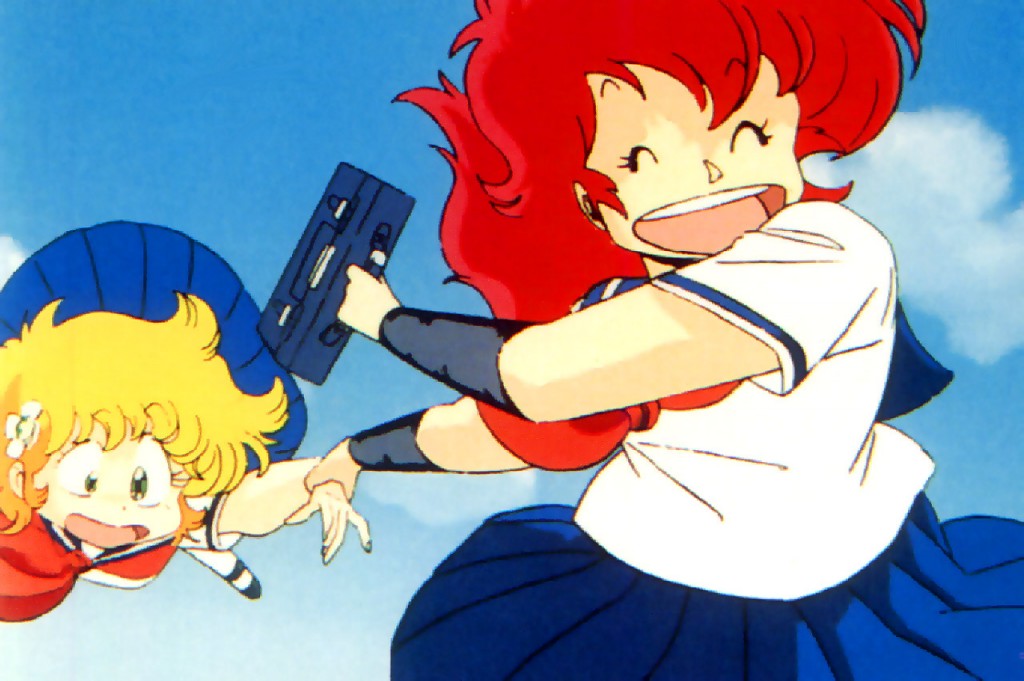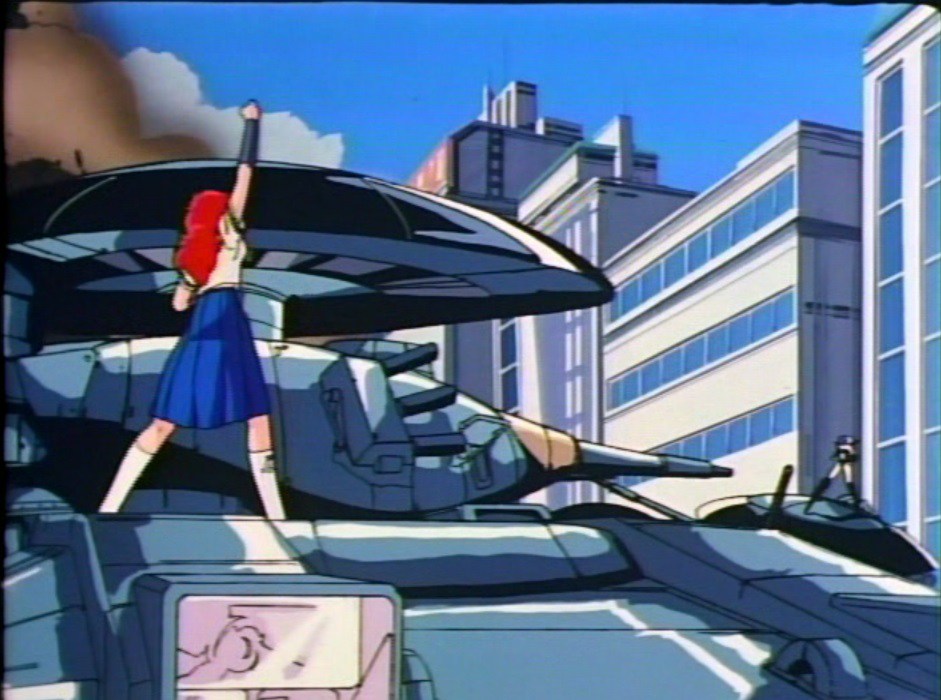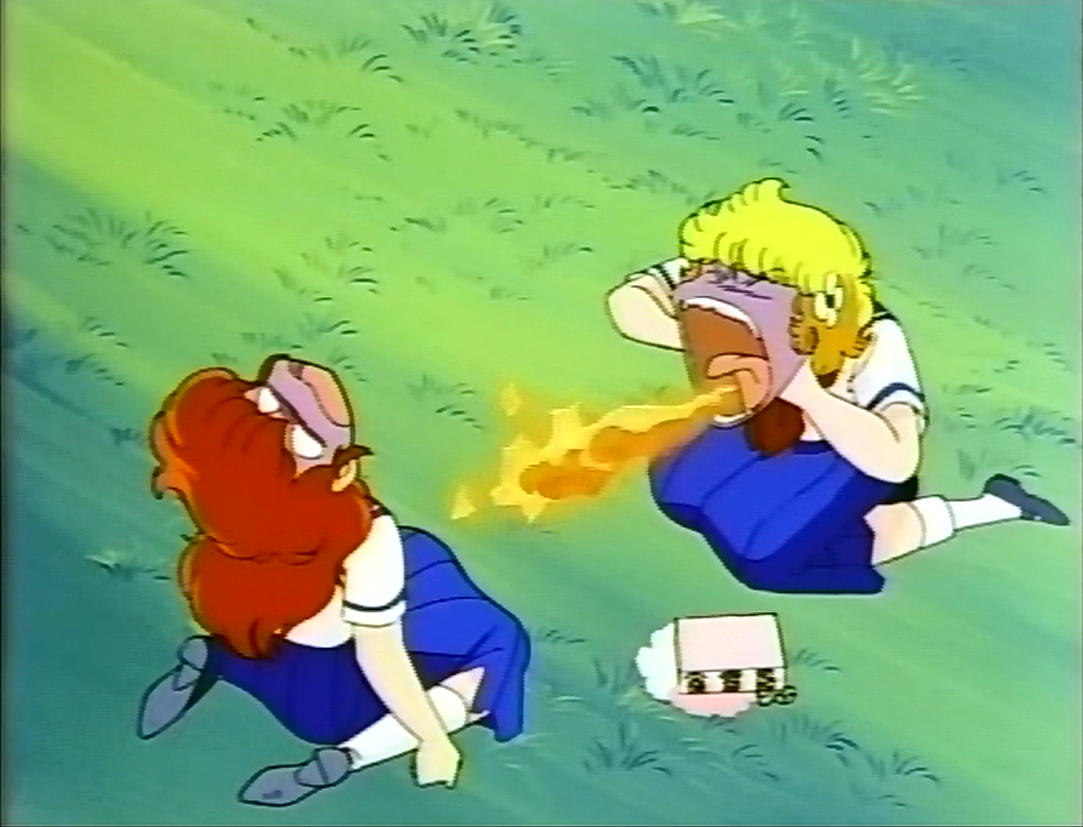Project A-Ko: The ’80s Anime That (possibly) Paid for a New Set of Teeth
In 1986, a tiny Japanese anime studio made the action-comedy, Project-Ako - a movie that may have paid for the director’s front teeth...
At some point in the mid-80s, a bunch of 20-something nerds sat down and decided to make an animated movie. Most of them had already been working in the anime industry already, but this would be a bit of a departure: the first time their little studio would attempt to create a roughly 90-minute feature all of its own. The results would be extraordinarily strange.
A camera crew went along and recorded what was going on at the time, and the footage wound up in a flimsy, 30-minute long clip that’s part behind-the-scenes documentary, part commercial. We see animators hard at work in their booths, painting and coloring cels. We see voice actors reading their lines, and singers in LA recording the soundtrack.
But even as the clip advertises Project A-Ko, the name of the feature all those nerds were working on, several people involved couldn’t quite hide their bafflement. “It’s a work that surpasses Disney,” an animation checker says with a nervous laugh. “Some say it’s the single biggest achievement ever.” Towards the end of the 30 minutes, several editors of anime magazines were asked in turn what they thought of the project; at that point, none had seen it, and were clearly at a loss for words.
“In our office, we call it the ‘fine line’ pic,” says one editor. “It could be a big hit or a big bomb. It’s a fine line.”
In retrospect, it’s easy to see why some of these industry people were so nonplussed. Here was a debut feature from a comparatively small, unknown studio (APPP, or Another Push Pin Planning) that took in giant robots, a love triangle between three female high-school students, alien invaders, superpowers, slapstick comedy, bubblegum pop music and scenes of city-wide destruction. The project had begun life as an episode of Cream Lemon, an infamous softcore adult anime series, before the director, Katsuhiko Nishijima, decided to rework it as something less salacious. It was a heady mix alright; who knew how it would turn out?
What nobody outside the studio could have counted on, however, is how much enthusiasm APPP’s animators would bring to Project A-Ko. It’s completely bonkers, but you can feel the energy humming from just about every scene.
The story that ties everything together barely defies description – it’s probably easier to say that it borrows freely from all sorts of TV anime from the mid-80s and riffs on it with little care for logic or tonal clarity. Project A-Ko is set in a near-future city, rebuilt several years after a gigantic alien craft crash-landed and left a gigantic crater (and a huge chunk of wreckage) in its wake. Any trauma left behind by the incident has long since ebbed, and teenage friends A-Ko and C-Ko are enjoying the usual rigmarole of life at a Japanese high-school. They’re constantly late, are told off for their lack of attention by their teacher, and fend off frequent attacks from the school bully – the spoiled, fabulously wealthy it-girl, B-Ko.
The thing is, everything in Project A-Ko is slightly askew. A-Ko might look like an ordinary teenager, but she also happens to have superhuman powers – when she’s late, she’ll grab C-Ko by the hand and tear off towards the school at a terrifying speed, tearing up chunks of road and destroying houses in her wake. B-Ko, meanwhile, isn’t so much a bully as a Lex Luthor-like supervillain, who’s obsessed with winning C-Ko’s affection from A-Ko and killing the latter with an assortment of hastily-built weapons. While all this is going on, an alien armada closes in on Earth, its guns trained directly on Graviton City…

The protagonists’ names provide a hint at the anything-goes attitude that went into Project A-Ko’s making. Loosely translated, A-Ko means “Kid A”, which means all the names are essentially placeholders. Even the film’s title, a riff on the Jackie Chan action opus Project A, was simply a working title that nobody bothered to change.
One animator working on Project A-Ko said that the idea was born out of the director’s wish to make “something mindless and fun”, which on one level, is exactly what the movie is. If you’re unfamiliar with anime, much of Project A-Ko looks pretty baffling; if you’re familiar with the likes of Macross (or Robotech), Captain Harlock, or Fist Of The North Star, you’ll recognize some of the references straight away. But as comic and lightweight as Project A-Ko is, the movie’s animated with real conviction – there’s a go-for-broke sense of creativity on display in the best scenes, from a huge opening space battle to a bizarre conclusion where A-Ko and B-Ko fight one another as the city around them descends into anarchy.
The low budget and the animators’ relative inexperience shows in some scenes, where the quality of the rendering and movement more closely resembles ’80s television than something made for the big-screen. But mostly, Project A-Ko still stands up: Koji Ito, who also worked on such things as Megazone 23 and Macross 7, provides the mecha designs here, and they’re captivating: the alien ships are spiky and full of detail, and B-Ko’s assorted robots and power armor are chunky and cool-looking. The latter provide some of the film’s best laughs, as the animators poke fun at the conventions of sci-fi anime. One transforming mecha, for example, leaves its pilot hopelessly trapped and unable to reach the controls because B-Ko hadn’t factored the cockpit into her design.

What’s more surprising, given Project A-Ko’s somewhat unseemly origins, is how good natured and (relatively speaking) wholesome it all is. Two brief scenes of nudity aside, the animators treat the all-female cast with respect; A-Ko’s simply a cool character – tough, feisty, and disarmingly patient with her whiny, immature best-friend, C-Ko. Similarly, B-Ko’s crush on C-Ko isn’t used for laughs or sleaziness – she just has a big crush on her, and that’s it.
Even with all its anime references and strange Japanese humor, Project A-Ko became something of a cult item in the west, with VHS releases in the US, UK, and Australia in the early ’90s. Audiences didn’t necessarily get all those references (we’re still figuring some of them out, if we’re being honest), but that didn’t necessarily matter. There’s an upbeat, dynamic energy in Project A-Ko that crosses boundaries; with its synth soundtrack and ’80s pop songs (produced by Richie Zito and Joey Carbone), it has the feel-good, easy-going air of an early John Hughes film and the unfettered action of a Jerry Bruckheimer flick.
Some of the best things about Project A-Ko may even have been accidental. As Patrick Roesle notes on his website, it’s a recurring joke that A-Ko, B-Ko, and C-Ko are too wrapped up in their own battles to even notice that there’s a full-scale alien assault going on. They don’t care that there’s a creepy figure named D hanging around, seemingly stalking them. We could get all lofty and argue that this is pretty much like Japan in the ’80s boom years: a new generation shrugging off the horror of the Second World War and enjoying the sunshine. Or, in more basic terms, it just captures the essence of everyday youth. Some of Project A-Ko’s best scenes just involve A-Ko and C-Ko going to the cinema, freaking out at a horror movie or choking on a badly-made lunch.

Today, Project A-Ko isn’t exactly talked about with the same reverence as, say, Akira, or the Fist Of The North Star movie, or any of those other features that comprised an early wave of anime to cross over from Japan. All the same, its cult success helped introduce a generation of viewers to Japanese animation, and while it’s a product of its time, Project A-Ko’s take on ’80s pop culture also makes it oddly watchable, even three decades later. (There’s also a quite brilliant twist towards the end that helps explain why A-Ko’s so powerful.)
We’ve made it this far, and we still haven’t talked about the detail mentioned in the heading: the whole thing about the teeth.
Going back to that behind-the-scenes documentary, director Kastuhiko Nishijima points to the gap in his upper jaw and says, with a certain amount of seriousness, that he wants to make a hit movie to pay for his missing incisors. We’re not too sure whether Nishijima was joking or not, or even whether Project A-Ko was actually a hit – the movie certainly got some sequels and a two-part video spin-of, though they’re far inferior to the 1986 original.
Ultimately, it’s best to imagine Project A-Ko as its animators did: a crazy, borderline experimental one-off. In the mid-80s, a bunch of nerds sat down and decided to make a movie together. They may have done it out of the frustration and boredom of working for years on the in-between cels on other anime TV shows. The director may have started the project because he wanted to pay for some new front teeth. Or they may have made Project A-Ko just for the sheer hell of it. Whatever the reason, we’re glad Project A-Ko exists.